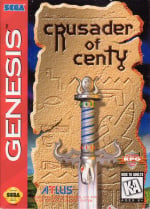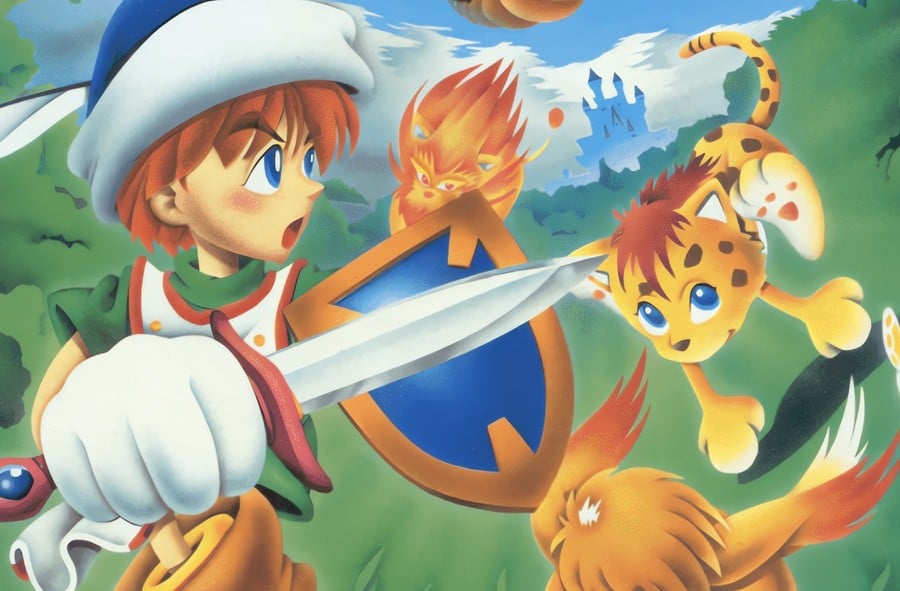
The 16-bit era in the mid-1990s was a magical period for many things, but especially console RPGs (turned-based and real-time action). Photorealistic digitised graphics on home consoles, such as with Mortal Kombat, were still in their nascent stage, meaning most visuals were still stylistically distinct, with a handcrafted originality to them, but massively improved over their 8-bit forbearers (even CD-ROM games such as Lunar, with its cinematic cut-scenes, still retained the artist's touch).
We had also already experienced an era of Precambrian experimentation during the 1980s, meaning developers now focused on refining ideas which were proven to be excellent while gently innovating based on then technological improvements. Naturally, there was healthy competition as developers attempted to outshine each other's works, and not just in RPGs, but all genres. The resulting smorgasbord of titles was truly glorious - just look at our Mega Drive and Super Nintendo lists.
The SNES of course had The Legend of Zelda: A Link to the Past, Secret of Mana, Illusion of Gaia, and Shadowrun, to name just four. Meanwhile, Sega's rival hardware enjoyed classics such as The Story of Thor, Landstalker, Exile, and numerous others. One such beloved cartridge was Soleil, known in Japan as Shin Souseiki Ragnacenty and in America as Crusader of Centy. It launched in June 1994 in Japan and, according to Electronic Gaming Monthly, hit the States in March 1995. Interestingly, according to Mean Machines Sega magazine, the UK release preceded the American, coming out in January 1995. What a time to be alive!
For those who never had the privilege of playing it, try not to think of Zelda (yes, we realise we broke that rule with the headline to this very feature, but still). Granted, it featured a boy with a sword leaving home on an adventure, and superficially it may look reminiscent, but Soleil did so much more. The overarching plot is melancholy and subverts several RPG tropes, almost reaching Black Mirror levels of grimdark.
Human children are drafted into a militia to fight an endless war of persecution against monsters, God himself is a maniac hell-bent on global genocide, all the while friendly innocents are massacred while mothers weep at the loss (seriously, you literally turn into a slime and talk to a mama slime lamenting her brood being terrorised). Mechanically, it innovates through smooth eight-way directional scrolling and 'items' based around 16 distinct animal companions; two animals can be equipped at a time, with certain combinations yielding special abilities. Throughout the game, as you acquire more animal buddies, you will use them to solve a diverse variety of puzzles and dungeons.
Reviews from the time attest to its quality; Beep! Magazine gave a median average of 7.5/10, Mean Machines Sega scored it 92%, while EGM gave it an average of 8/10. The genius behind this often-overlooked classic is lead programmer Yukihiko Tani, also known as Bugtarou. You may not recognise the name, but he was one of the genius programmers at Wolf Team and Gau / NEX Entertainment, working on the likes of Final Zone, Sol-Feace, El Viento, Earnest Evans, and the genuinely astounding Ranger X. "The development of Ragnacenty started at a company called GAU Entertainment, which was later integrated as NexTech," Tani tells us. "I was assigned as the main programmer when the project launched."

Given that a February 1994 magazine scan exists showing the working title of Soleil as being Shining Rogue, we naturally wanted to know what Tani's team had originally intended. "Now, I'm going to confide in you," begins Tani, perhaps a little hesitantly, "but the original plan was to create an action RPG as part of the Shining series. So following on from Shining in the Darkness and Shining Force. The provisional title was Shining Rogue. Then, after some twists and turns, it was decided to restart the project under the original title of Shin Souseiki Ragnacenty. At this time, during the refocus, the team's staff was joined by Yayoi Onda, who was in charge of the scenario and game system."
There's not a lot of information about Yayoi Onda online, with seemingly only five games to her name. Given how powerful the scenario of Soleil, which examines prejudice and apostasy and places the player in the role of traditional enemies, we had to enquire further. Who was Miss Onda? Did she conceive of the 'mix-n-match' animal equipment?
"I think her addition to the staff deepened the worldview of Ragnacenty and made it more profound," agrees Tani. "Especially for example, when talking about Ragnacenty, it cannot be overlooked how the player is made to see things from a monster's perspective, when the player's hero is transformed into a slime monster and then chased by another hero. The animal friend system meanwhile uses the ideas of her and Toshio Toyota, the main programmer of Ranger X, who was also in charge of the opening and ending on Ragnacenty, among other things."
This 'animal friend' system deserves special attention, since the special abilities they provide are directly entwined with situational puzzles in dungeons and also required for defeating bosses. For example, Inferno the lion grants the power of fire, and Chilly the penguin grants the power of ice. Together with Dodo, you will be hot-swapping on the fly to defeat Georama, who himself also swaps elements. The final boss meanwhile requires deft use of Inferno, Dodo, and Wong the racoon as you open its eye to attack. Rio the armadillo, meanwhile, can be thrown and used as a mobile platform. Some of the 16 animals are useless, but you'll have fun working out which can be used where and how.
While Toyota was sub-programmer on Soleil, and helped with this system, the man at the forefront of the code was Tani. Ultimately though, everyone cooperated as a team, contributing ideas. "As for myself," Tani says proudly, "I was desperate to create something that could not be defeated or beaten by The Legend of Zelda: A Link to the Past. The action wasn't too difficult, and I was always conscious of content that felt rewarding but was still challenging. The part I was most concerned with was that while Zelda's action is four-way, in four distinct directions, in Ragnacenty, I made it possible to rotate each of the player's parts so it could be controlled in an analogue manner."
If you look at the main character sprite, you'll see just how much effort went into programming the main character: the hero's upper and lower body, plus sword swing, are all animated as separate components. Likewise, unlike Zelda, his sword and shield are always held in the same correct hand and never mirrored.
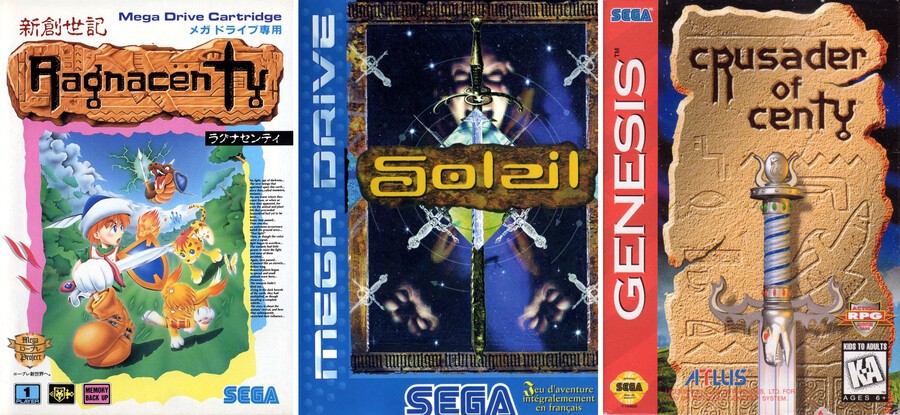
Taking into account the superior animated visuals, the versatile equipment combos, and the darker story, we hope we've convinced you this isn't merely 'Zelda on the Mega Drive', even if that is an admittedly handy way of grabbing the attention of people who have never heard of it before; Soleil is a grand showcase of what could be achieved with a talented group of friends honing their craft.
Given we had the attention of the game's programmer, now was also the time to solve a mystery! If you head over to The Cutting Room Floor, you'll discover that Soleil contains sprite data for the main character from The Story of Thor on Mega Drive. Leftover sprite data between games is not unheard of, except... Ragnacenty was developed by Gau Entertainment and came out mid-1994, and The Story of Thor came out 6 months later, having been developed by an entirely different company, Ancient. So why does Ragnacenty seem to contain graphics and code data from another later-released game? We showed Tani the graphics data from TCRF.
"I did not even know that pixel art like this was in the ROM!" he admits. "I am very surprised. As far as I know there is no connection; Ragnacenty and The Story of Thor have nothing to do with each other. I think perhaps it's leftover data, left behind by a graphics designer from during play testing?"
With this mystery still unsolved, and Tani unsure, perhaps someday we'll be able to find sub-programmers Toshio Toyota and Satoshi Outake, or maybe character designer Toshio Yamamoto, and find out what happened. Finally, we asked Tani what his feelings were regarding the game today. "It's been almost 30 years since it was released," he says reflectively, "and I'm very honoured to have Ragnacenty featured in this way."
Bonus Feature: The Shining Rogue Mystery
Along with the mystery regarding The Story of Thor, there was another mystery worth investigating. Discovering that Ragnacenty started as a Shining Force spin-off called Shining Rogue, I showed the Yukihiko Tani interview to Time Extension contributor and hardcore Shining fan Ashley Day. He was interested to see this and pointed out that Landstalker also had the working title of Shining Rogue, which is where things get really interesting.
Ragnacenty was developed by GAU Entertainment, which had spun off from Wolf Team, a subsidiary of Telenet. GAU later rebranded as NexTech and then later still as NEX Entertainment. From around 2002 NexTech actually developed several official titles in the Shining series: Shining Soul (GBA, 2002; later available on Wii U); Shining Tears (PS2, 2004); Shining Wind (PS2, 2007).
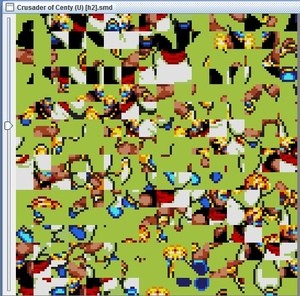
Two of those had Yoshitaka Tamaki on staff; he has a prominent career on a long string of famous JRPGs, including eight Shining titles, the ~stalker series at Climax, plus Alundra. Anyway, Tamaki was also story writer and graphics artist on Landstalker. However, incredibly, if you trawl MobyGames, it turns out not a single person credited on Ragnacenty was credited on Landstalker. So how is it both games allegedly started off as Shining Rogue?
Googling in English brings up over 150 results proclaiming Landstalker started as Shining Rogue – but not a single primary source, only forum and blog conjecture. Which made it all seem like a rumour that people had come to accept as fact.
In contrast, there was solid primary evidence of Ragnacenty's origins thanks to the above Yukihiko Tani interview, plus the GDRI finding that preview page from Beep! Mega Drive magazine, February 1994, both proving that Ragnacenty started as Shining Rogue. There didn't seem to be any evidence for Landstalker, though.
Googling the names in Japanese doesn't bring up much; a blog entry with the claim, a few other vague results, and a footnote in a news item from 2001 on Camelot's own website. This footnote is at least a primary source, but it was written by Yasuhiro Taguchi, director of the entire Shining series at Camelot, who is not credited anywhere on Landstalker. And yet Taguchi states: "When I first met Yasuhiro Ohori, CEO of Matrix Software, I was making the first Shining Force and Shining Rogue (later Landstalker), and Mr Ohori joined the project as external production staff." Even though Taguchi isn't credited on Landstalker, Ohori is, as a map designer.
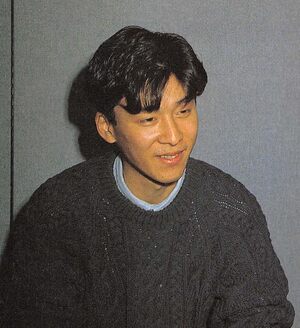
Nothing made sense anymore. Equally as intrigued by all this, Ashley Day decided to ask Landstalker's Executive Director Kan Naito directly on Twitter. His reply was perfect: "Maybe..." Even involving the director himself we were no closer to solving this. Though Mr Day added: "Worth remembering that the early Shining games were supervised by the Takahashi brothers but with the grunt work done by external developers. Possibly Landstalker was supposed to be a Shining game but then drifted away to someone else's purview."
Still wanting an explanation from a primary source, we presented our findings to Yukihiko Tani. After disentangling the labyrinthine web of staff credits, Yukihiko Tani explained: "Ragnacenty was initially supervised by Hiroyuki Takahashi, currently CEO of Camelot, who was in charge of the Shining Force series. Since Mr Takahashi was also involved with Landstalker, Shining Rogue was used as a prototype name."
At last, a first-hand explanation that was plausible! It would seem that Yasuhiro Taguchi and Hiroyuki Takahashi, both Camelot and Shining series veterans, were involved with Landstalker, but never credited. At some point, Landstalker ended up in the hands of Kan Naito and Climax. Meanwhile, Hiroyuki Takahashi was also involved with Ragnacenty, again never credited, and evidently had a strong fondness for naming his projects Shining Rogue!
This is a fascinating scenario where Mega Drive developers Camelot, Climax, GAU, and Ancient were all clearly communicating with each other; meanwhile, the games of the early Shining series, Landstalker, Ragnacenty, and The Story of Thor, all share a little bit of each other's DNA. They're all slightly connected. Quite how The Story of Thor's graphics ended up intermixed with Ragnacenty though, still needs investigating.

